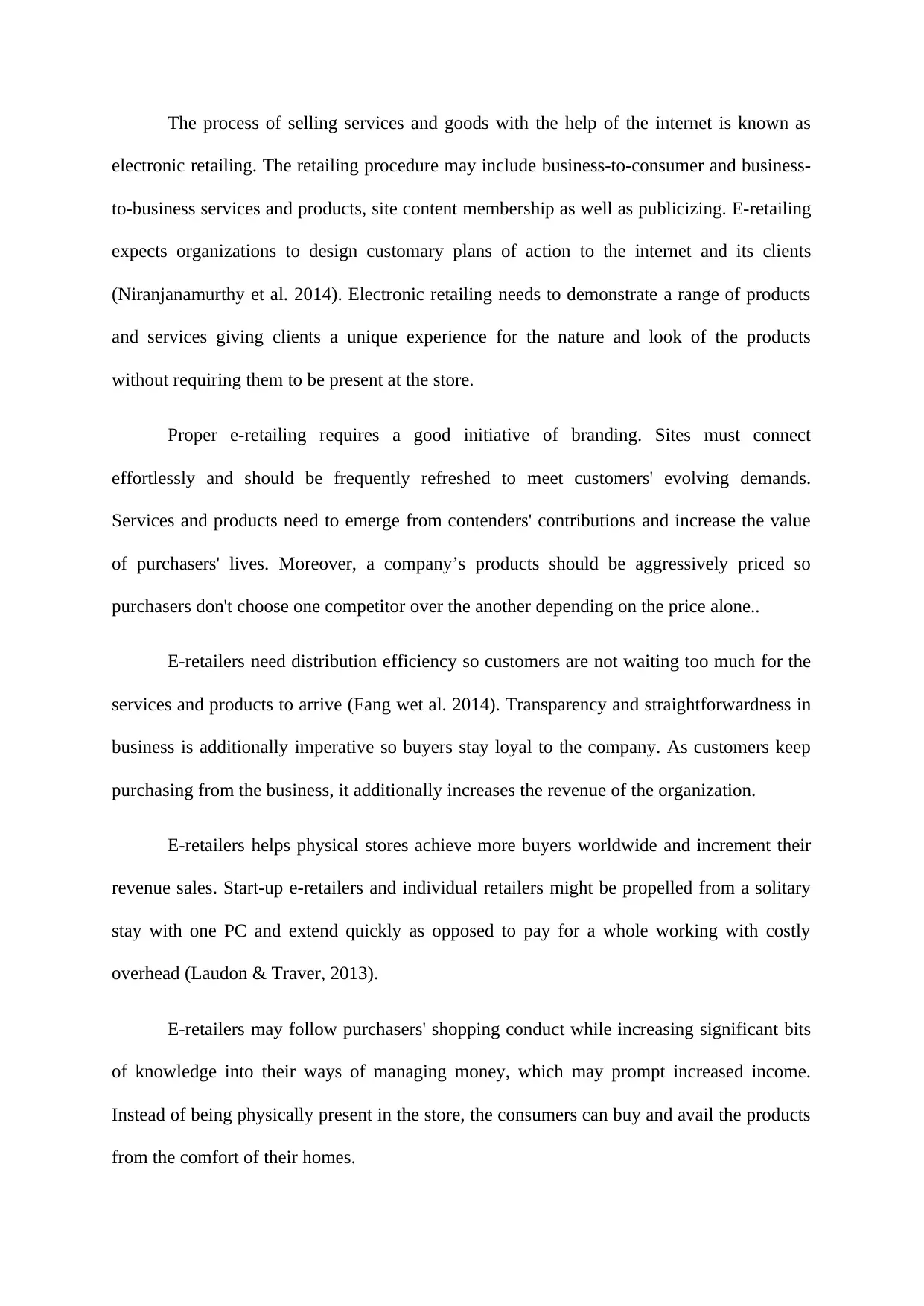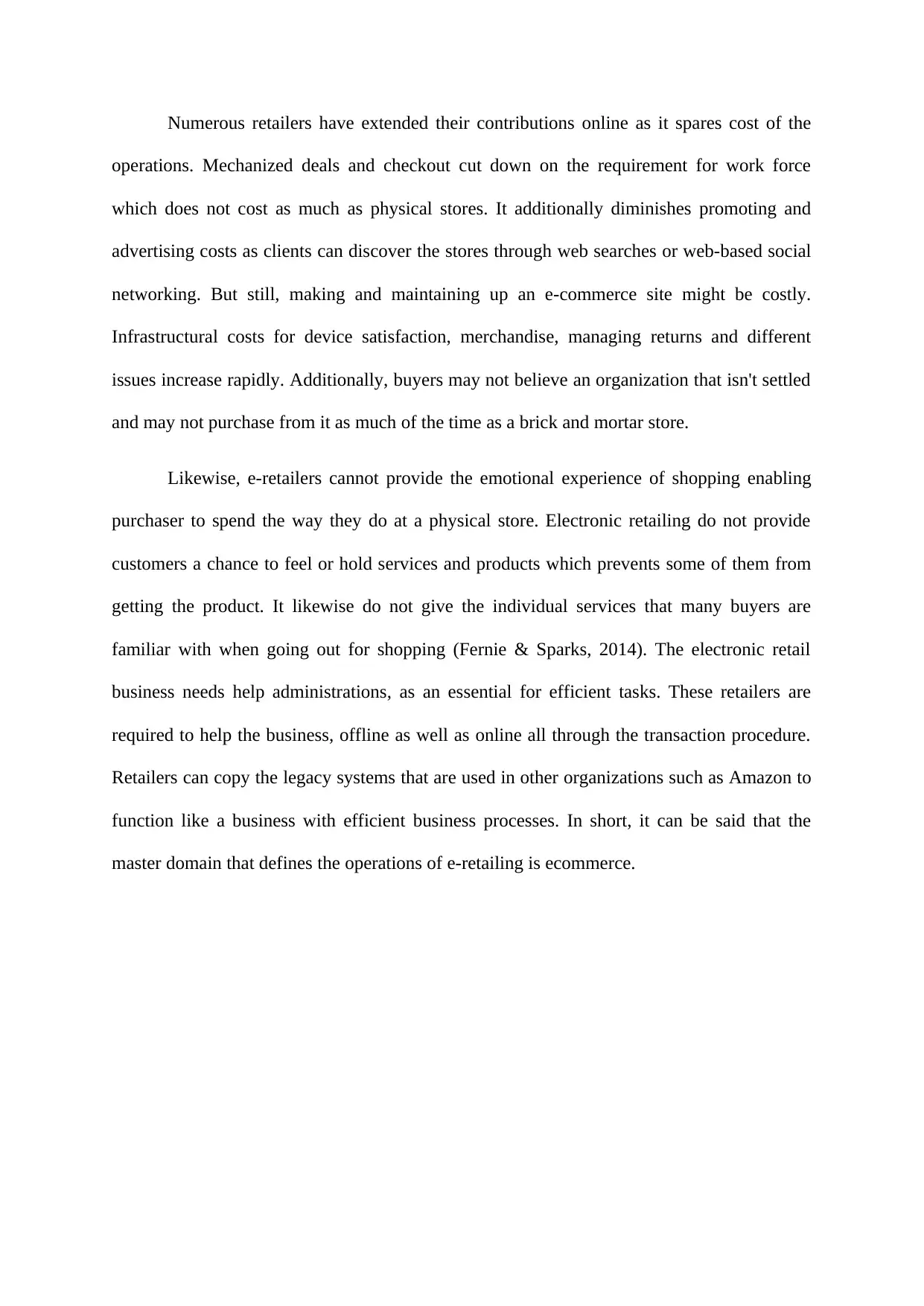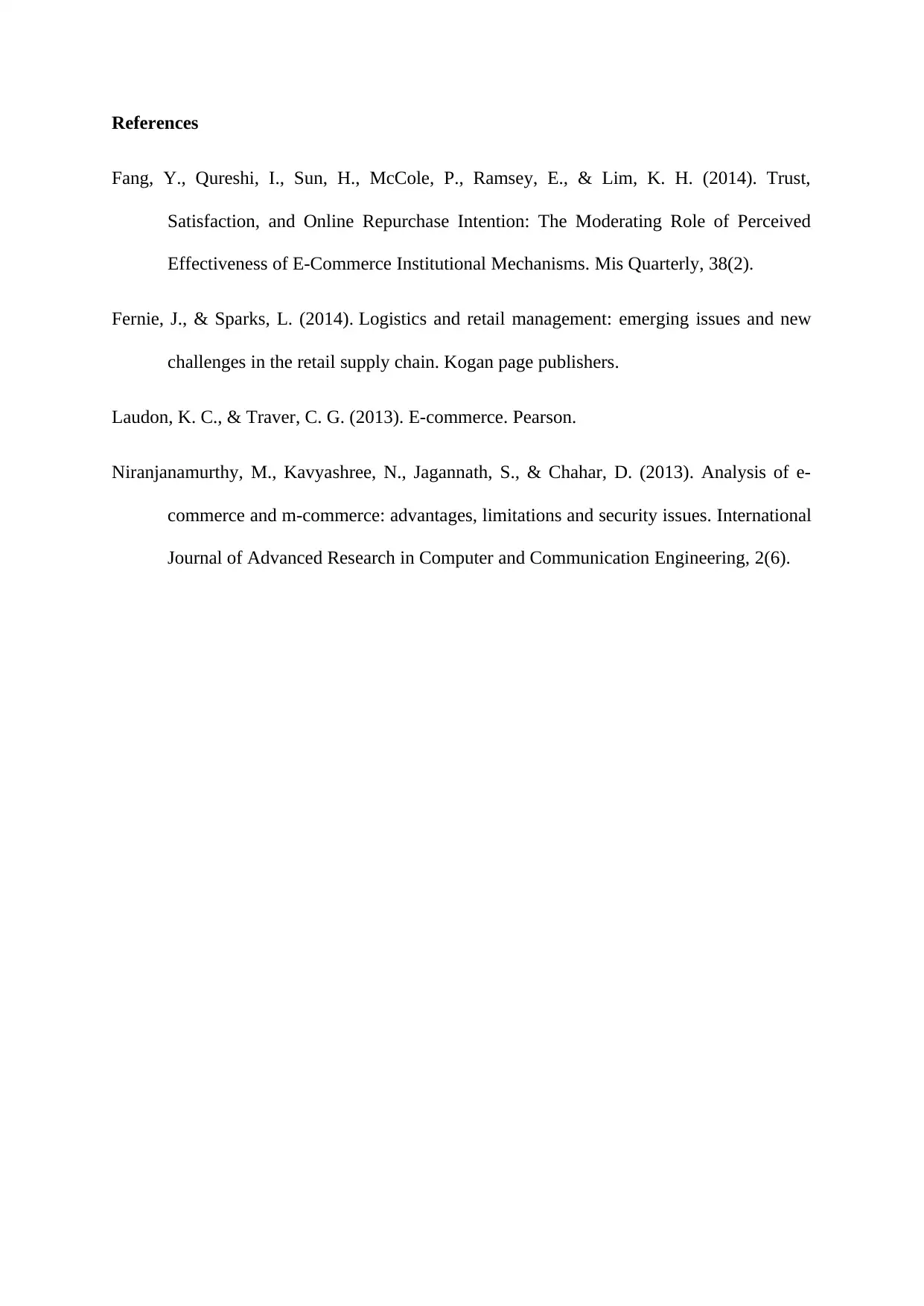COIT20250 E-Business Systems: Week 8 E-Commerce Retailing Portfolio
VerifiedAdded on 2023/06/12
|4
|774
|450
Portfolio
AI Summary
This portfolio delves into the realm of electronic retailing, examining the process of selling goods and services via the internet, including B2C and B2B models. It highlights the importance of adapting traditional business models to the online environment, emphasizing branding, website design, and competitive pricing. The discussion covers the advantages of e-retailing, such as expanded reach, reduced operational costs, and data-driven insights into consumer behavior. It also addresses challenges like building customer trust, replicating the emotional experience of physical shopping, and managing infrastructural costs. The portfolio further underscores the necessity of robust support services and the potential for e-retailers to emulate successful models like Amazon to optimize their business processes. The central theme emphasizes that e-commerce is the master domain defining the operations of e-retailing. Desklib provides students with access to past papers and solved assignments to aid in their studies.
1 out of 4











![[object Object]](/_next/static/media/star-bottom.7253800d.svg)